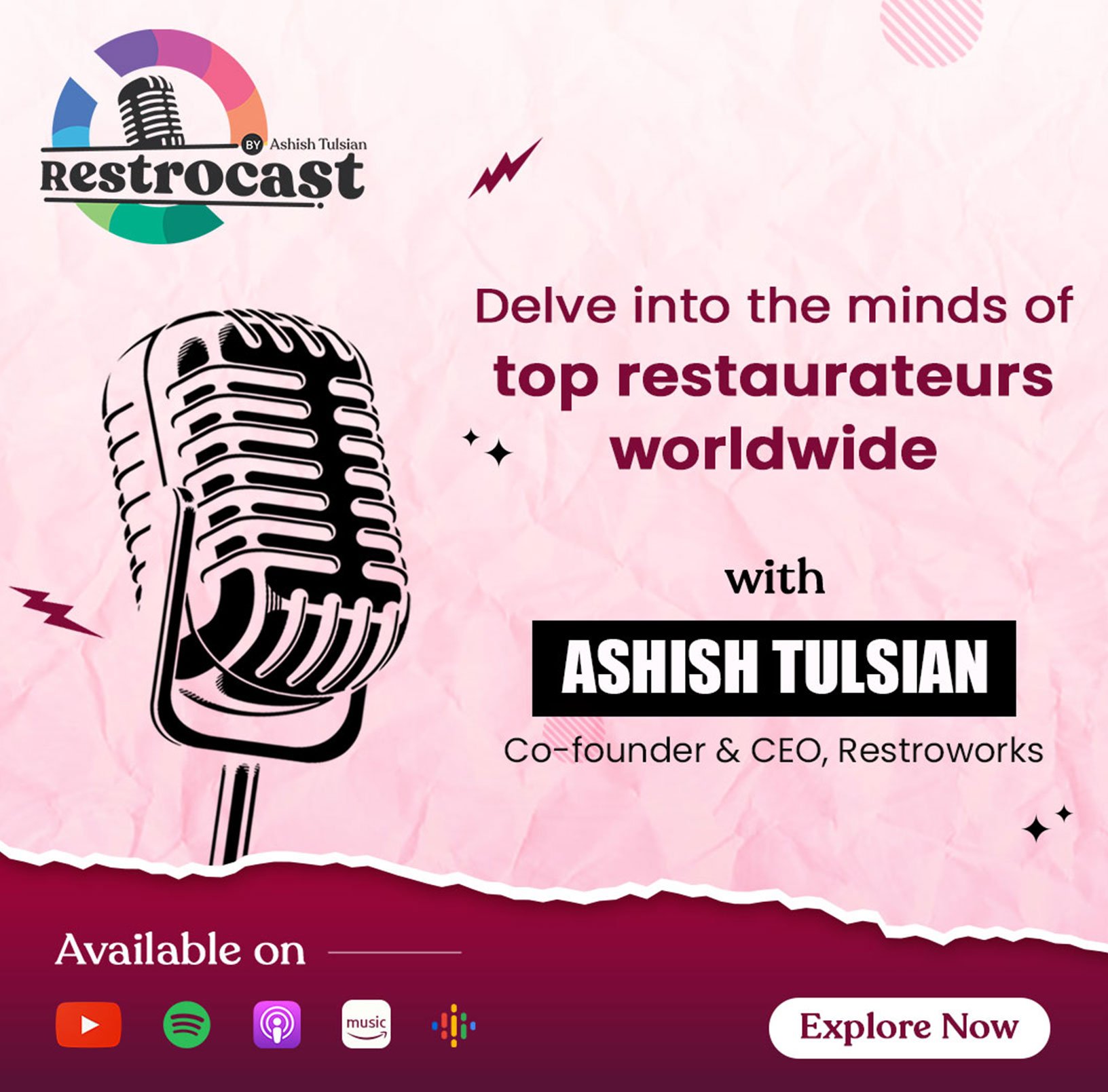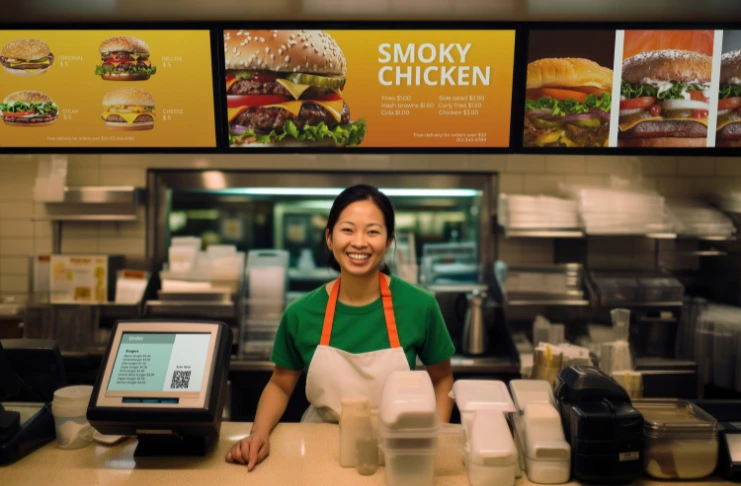
Running a fast food business is all about speed, flavor, and volume—but let’s be honest, increasing your sales in such a competitive space isn’t always easy. One day you’re packed with customers, the next you’re wondering why your takeout orders have slowed down. Sound familiar?
The good news? There are practical, proven ways to boost your fast food sales—without reinventing your entire business. Whether you’re looking to drive more walk-ins, improve your online ordering experience, bring in new customers, or keep loyal fans coming back, this guide breaks it all down for you.
Let’s dive into smart, proven strategies that can help you grow your restaurant sales.
How to Increase Sales in a Fast Food Restaurant from Walk-In Customers
1. Optimize Menu Design for Upselling
Menu design plays a crucial role in driving restaurant sales. Instead of overwhelming customers with excessive options, focus on high-margin items and combinations that encourage them to spend more.
- Highlight Bestsellers with Eye-Catching Visuals: Customers make quick decisions, often driven by visuals. Using bold images and appealing descriptions draws attention to the most profitable items. For example, a cheesy burger with dripping sauces is more enticing than just a name on the menu.
- Use Strategic Pricing: Offering value-packed meal combos encourages upselling. A slight discount on a burger, fries, and drink combo persuades customers to spend more than they would on a single item. McDonald’s Happy Meals and Extra Value Meals are perfect examples.
- Create Limited-Time Menu Items for Urgency: Exclusive, seasonal items excite and boost restaurant sales. When McDonald’s introduces limited-edition burgers, customers rush to try them before they disappear, increasing sales in short bursts while enhancing brand loyalty.
For example, McDonald’s introduces seasonal variations of its burgers, creating excitement and boosting short-term sales.
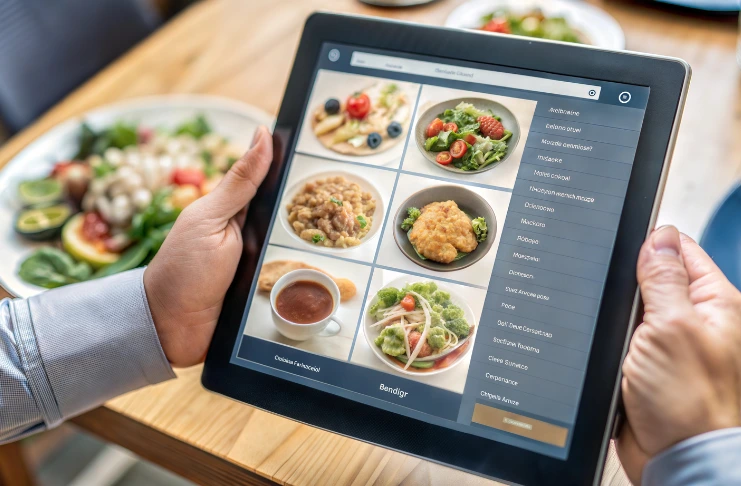
2. Train Staff to Cross-Sell Complementary Items
A well-trained staff can significantly increase sales. Encouraging employees to suggest complementary items based on customer orders can boost revenue effortlessly.
- If a customer orders a burger, suggest upgrading to a combo with fries and a drink.
- Offer dessert recommendations at the counter.
- Promote meal add-ons like sauces or sides.
Successful fast-food chains integrate training programs where employees learn persuasive selling techniques without making customers feel pressured.
3. Run In-House Promotions (Happy Hours or BOGO Deals)
Exclusive promotions encourage customers to visit your restaurant more frequently. Consider special deals like:
- Happy Hour Discounts: It boosts restaurant sales by attracting customers during slower hours. Offering discounted combos or exclusive menu items incentivizes patrons to visit when business is quieter. This strategy maximizes revenue while ensuring steady foot traffic throughout the day.
- Buy One, Get One (BOGO) Offers: BOGO deals drive immediate sales growth by enticing customers with value. Fast-food restaurants use this tactic to increase orders, encourage the trial of new menu items, and enhance customer satisfaction. Limited-time BOGO promotions create urgency, prompting repeat visits and greater brand loyalty.
- Loyalty-Based Discounts: Rewarding loyal customers strengthens retention and restaurant sales. Exclusive discounts for repeat visitors encourage long-term patronage, building a dedicated customer base. Structured loyalty programs—such as points-based rewards or personalized discounts—motivate customers to return frequently and spend more over time.
For example, Subway’s “Buy One, Get One Free” sandwich deal successfully increases footfall during promotional periods.
4. Improve Order Turnaround Time
Speed and efficiency are paramount in fast food. If customers experience long wait times, they may choose competitors instead.
- Optimize kitchen workflow by streamlining food preparation.
- Leverage technology, such as self-ordering kiosks, to minimize order errors.
- Ensure staff efficiency with proper scheduling and training.
A great example is Domino’s, which promises faster deliveries with its “30-minute delivery guarantee.” Speed becomes a selling point, attracting more customers.
Ways to Boost Your Takeout and Delivery Orders
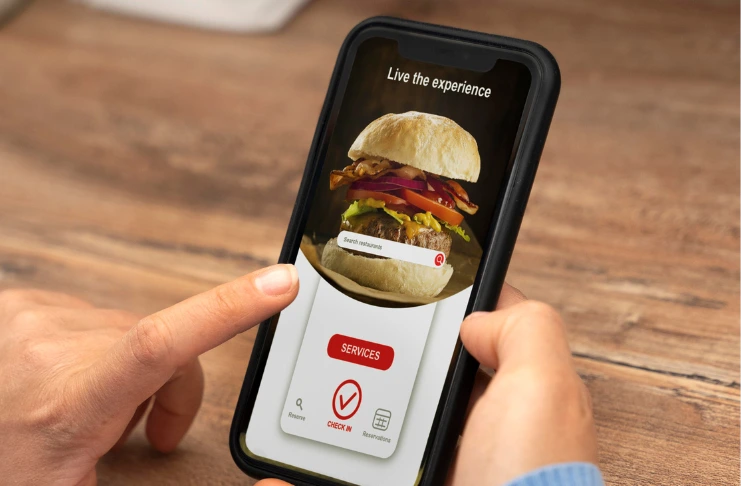
1. Simplify the Online Ordering Experience
Ensuring a seamless online ordering process is key to increasing restaurant sales. Customers value convenience, and a well-optimized system encourages repeat business. Here are three ways to improve online ordering for fast-food restaurants:
- Ensure Mobile Compatibility: A mobile-friendly website or dedicated app simplifies ordering and enhances customer experience. Most fast-food buyers place orders via smartphones, so optimizing for mobile ensures a frictionless process. Businesses like Domino’s use user-friendly apps that streamline purchasing, boosting restaurant sales.
- Reduce Clicks for Faster Checkout: Customers prefer quick ordering. Minimize unnecessary steps by offering one-click reordering and intuitive navigation. An easy-to-use digital menu, straightforward customization options, and a rapid checkout process make ordering smoother, increasing sales volume for fast-food businesses.
- Offer Multiple Payment Options: Providing various payment methods like UPI, wallets, debit/credit cards, and cash on delivery makes transactions convenient for customers. Fast-food brands integrating diverse payment options remove purchase barriers, ensuring seamless transactions and attracting new customers to online ordering.
2. Offer Exclusive Takeout or Delivery Deals
Encouraging customers to opt for takeout or delivery ensures revenue even when foot traffic is low.
- Provide discounted takeout meal bundles.
- Introduce free delivery thresholds to encourage higher spending.
- Implement late-night deals to cater to night-time customers.
For example, “Get 20% off your first online order” or “Free drink on all app orders.” These deals encourage customers to shift toward digital channels, increasing sales while freeing up space in-store.
INDUSTRY INSIGHT
A study projects that the global restaurant takeout market will grow from $16.2 billion in 2025 to $42.5 billion by 2035, at a CAGR of 8.2%. This growth is fueled by increased urbanization, fast-food chain expansion, and rising consumer demand for convenience foods.
3. Invest in High-Quality Packaging
Delivering fast food makes packaging a critical factor in the customer experience. Poor packaging leads to spills, soggy food, and dissatisfied customers.
- Use eco-friendly, sturdy packaging to maintain food quality.
- Ensure thermal insulation for hot and cold items.
- Include branded packaging to enhance brand visibility.
For instance, Starbucks uses high-quality cups with secure lids to avoid spillage, improving customer satisfaction.
4. Partner with Multiple Food Delivery Platforms
Expanding availability by partnering with delivery apps helps boost sales while minimizing operational costs.
- Partnering with leading food delivery platforms allows restaurants to tap into a larger customer base. Platforms like Swiggy and Zomato already have loyal users looking for convenient meal options, making it easier to attract potential customers without requiring additional marketing.
- A well-optimized restaurant profile increases visibility and order conversions. High-quality food images, detailed descriptions, and clear pricing enhance customer appeal. Highlighting special deals, combos, or bestsellers through platform promotions can further increase restaurant sales and drive engagement.
- Positive reviews improve trust and influence buying decisions. Encouraging satisfied customers to leave ratings and feedback boosts credibility, ensuring higher rankings on delivery platforms. Restaurants with consistently good reviews often appear at the top of searches, increasing exposure to new customers.
Burger King ensures a broad reach by collaborating with major food delivery platforms while offering direct ordering incentives.
How to Attract New Customers and Increase Sales

1. Run Geo-Targeted Ads on Social Media
Using geo-targeted social media ads can significantly increase restaurant sales by targeting potential new customers within a specific location.
- Target Local Customers with Ads: Utilize Facebook, Instagram, and Google Ads to reach users near your restaurant. Customize promotions based on meal times, events, or peak hours. Ads for breakfast deals during office hours or late-night snacks for nearby college students drive more foot traffic.
- Offer Location-Based Discounts: Encourage first-time orders with exclusive discounts available only to local users. Promos such as “10% off for customers within 5 km” attract visitors nearby.
- Increase Engagement with Interactive Content: Engage your audience with polls, contests, and video content highlighting your fast-food offerings. Encourage customers to post reviews, tag their location, and share experiences on social media.
2. Collaborate with Local Influencers or Food Bloggers
Partnering with local food bloggers and micro-influencers can drive high-value traffic to your restaurant. Their authentic recommendations help build trust and attract new customers who may not have discovered you otherwise.
Invite them for tastings or offer exclusive previews of new menu items. For example, a fast food joint in Las Vegas saw a 30% uptick in footfall after a local influencer shared an Instagram Reel of their cheese burst fries.
INDUSTRY INSIGHT
According to a recent study, 92% of consumers are more likely to make a restaurant reservation after seeing positive reviews or recommendations from an influencer. This highlights the growing influence of digital marketing in the food industry. Restaurants leveraging local influencers can boost credibility, enhance brand awareness, and attract new customers. By sharing authentic experiences, influencers create trust, helping restaurants increase sales through targeted social media promotions. |
3. Launch a Referral Program
Word-of-mouth is one of the most effective marketing tools. Encouraging existing customers to bring in new diners helps expand your customer base organically while building brand loyalty.
- Offer incentives like discounts or free items when a referred customer makes their first purchase. For example, a “Refer a Friend, Get 10% Off” deal encourages participation while increasing repeat business.
- Implement online ordering integrations with referral codes to track participation easily. Apps and digital loyalty programs help automate the process, ensuring seamless management and scalability.
- Promote the program via social media, email marketing, and in-store signage. Highlight success stories and customer testimonials to boost credibility and attract new customers through personal recommendations.
4. Optimize Your Google Business Profile
A well-optimized Google My Business (GMB) profile is crucial for increasing restaurant sales and attracting new customers. When diners search for fast-food options nearby, a complete and engaging profile ensures your restaurant stands out.
- Keep Information Updated: Ensure your restaurant business hours, menu, address, and contact details are accurate. If your restaurant offers delivery, takeout, or dine-in options, highlight them in the profile. Regular updates improve visibility and help customers find reliable information.
- Encourage Customer Reviews: Reviews build credibility and influence purchasing decisions. Ask satisfied customers to leave feedback, as positive ratings improve rankings in local search results. Responding to reviews—both positive and negative—shows professionalism and strengthens customer trust.
- Optimize SEO-Friendly Descriptions: Use relevant keywords like “fast food near me” or “best burgers in [city]” in your business description. Adding high-quality photos of food, promotions, and interiors enhances engagement, making online ordering or walk-in visits more appealing.
How to Boost Restaurant Sales by Getting Repeat Business
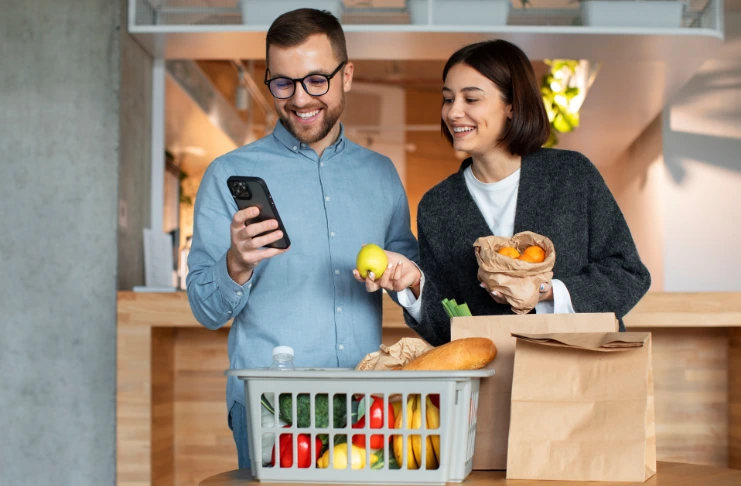
1. Implement a Customer Loyalty Program
Loyalty programs encourage repeat visits and increase the average lifetime value of your customers. Punch cards, points-based systems, or app-based rewards (e.g., buy 5 burgers, get 1 free) are easy to manage and motivate return visits.
Domino’s rewards points for every order, redeemable for free pizzas—a simple mechanism that drives retention and repeat orders.
2. Use Email Marketing
Email marketing remains one of the most cost-effective strategies for fast-food businesses to increase restaurant sales and keep customers engaged. Unlike social media ads, which require ongoing investment, email marketing provides a direct communication channel that builds loyalty over time.
- Gather customer emails during online ordering or at checkout via loyalty programs. Segment these contacts into different categories—frequent buyers, inactive customers, or first-time visitors—to personalize messaging and maximize impact without making emails feel like spam.
- Personalization boosts engagement. For example, a “We Miss You” discount can re-engage inactive customers who haven’t ordered in 30 days. A “New Menu Alert” email introduces exciting additions to loyal customers, driving repeat visits and restaurant sales.
- Reward repeat customers with exclusive discounts or bonus points via email. Programs like birthday rewards, VIP deals, or milestone discounts create incentives for continuous purchases, ensuring long-term loyalty.
3. Celebrate Customer Milestones with Personalized Offers
Recognizing customers’ birthdays, anniversaries, or loyalty milestones with personalized deals can strengthen brand loyalty. For example, sending a free dessert coupon on a customer’s birthday creates a feel-good moment and drives them back to your outlet.
Automate these messages using CRM tools or your POS-integrated marketing system to streamline the process.
Conclusion
Increasing sales in fast food goes beyond offering great deals—it’s about creating a brand experience that attracts new customers and keeps loyal ones coming back. From smart menu design to optimized online ordering, and engaging social media to strong referral programs, every strategy plays a role in boosting restaurant sales.
The key is consistency—maintaining quality, speed, and customer satisfaction while adapting to evolving trends. Take the time to understand your customers, listen to their feedback, and refine your approach. Fast-food success isn’t built on one-time promotions but on building trust, excitement, and convenience that drive repeat business.
Every order is an opportunity to upsell, engage, and retain a customer. Whether it’s a viral social media moment or a perfectly packaged delivery, your efforts today shape tomorrow’s loyal fan base. So, go beyond sales—build a brand customers can’t resist.
Frequently Asked Questions
Focus on menu optimization, staff training, efficient online ordering, and local marketing. Combine these with promotions and loyalty programs to drive consistent growth.
Running limited-time promotions such as discounts or “Buy One, Get One Free” offers drives immediate customer engagement. Pairing these with geo-targeted social media ads ensures visibility among the right audience. Additionally, streamlining online ordering enhances convenience, attracting more customers and boosting fast-food sales quickly.
Leverage social media, influencer collaborations, and eye-catching in-store promotions. Good visuals and strong branding make a difference.
Brands like McDonald’s and Starbucks lead globally, due to their scalability, consistent quality, and focus on digital ordering and customer engagement.
Increasing profits involves optimizing menu pricing with high-margin items, reducing food waste, and leveraging upselling techniques like meal combos. Encouraging online ordering boosts efficiency while cutting labor costs. Partnering with multiple delivery platforms expands reach, ensuring sustained revenue growth through convenience-driven customer demand.
They use local advertising, social media, influencer partnerships, and app-based offers to capture attention and convert traffic.
Enhance service speed, ensuring quick order fulfillment to improve customer satisfaction. Invest in targeted marketing, such as social media ads, to attract new customers. Implement loyalty programs to encourage repeat business. Expand delivery options, partnering with platforms to increase reach while analyzing sales data for monthly improvements.
Use high-quality visuals, catchy offers, convenience through delivery apps, and word-of-mouth referrals to pull customers in.

